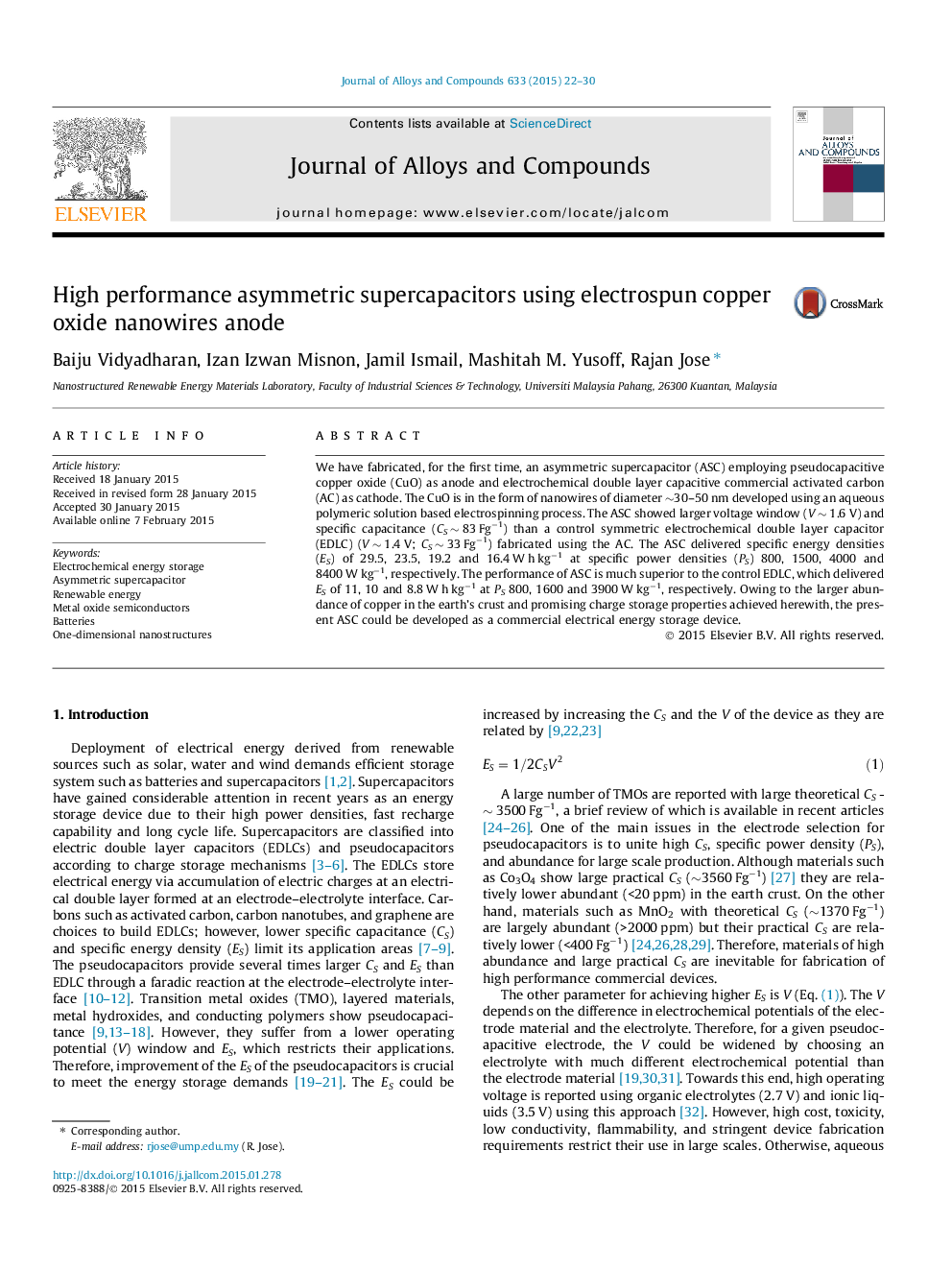| Article ID | Journal | Published Year | Pages | File Type |
|---|---|---|---|---|
| 1609298 | Journal of Alloys and Compounds | 2015 | 9 Pages |
•An asymmetric supercapacitor was fabricated using CuO as anode for the first time.•The device showed threefold higher energy density than a control EDLC fabricated using activated carbon.•The device showed power density similar to the control device.•The device showed ∼98% capacity retention at the end of 2000 cycles.
We have fabricated, for the first time, an asymmetric supercapacitor (ASC) employing pseudocapacitive copper oxide (CuO) as anode and electrochemical double layer capacitive commercial activated carbon (AC) as cathode. The CuO is in the form of nanowires of diameter ∼30–50 nm developed using an aqueous polymeric solution based electrospinning process. The ASC showed larger voltage window (V ∼ 1.6 V) and specific capacitance (CS ∼ 83 Fg−1) than a control symmetric electrochemical double layer capacitor (EDLC) (V ∼ 1.4 V; CS ∼ 33 Fg−1) fabricated using the AC. The ASC delivered specific energy densities (ES) of 29.5, 23.5, 19.2 and 16.4 W h kg−1 at specific power densities (PS) 800, 1500, 4000 and 8400 W kg−1, respectively. The performance of ASC is much superior to the control EDLC, which delivered ES of 11, 10 and 8.8 W h kg−1 at PS 800, 1600 and 3900 W kg−1, respectively. Owing to the larger abundance of copper in the earth’s crust and promising charge storage properties achieved herewith, the present ASC could be developed as a commercial electrical energy storage device.
